I. Introduction
Generative AI feels like something pulled straight out of science fiction—a system that can write essays, create art, compose music, and even generate videos with nothing but a prompt. But it’s very real, and it’s already changing the way we create and communicate.
So, what exactly is Generative AI? In simple terms, it’s a type of artificial intelligence that creates new content—whether text, images, audio, or video—based on the patterns it has learned from existing data. Unlike traditional software, which follows rigid rules, generative models learn from huge datasets and then use that knowledge to generate something new.
The roots of generative AI go back to the earliest machine learning experiments, but the real breakthrough came with models like GPT (Generative Pre-trained Transformer) for text and DALL·E for images. These tools marked a shift: AI was no longer just for crunching numbers or recognizing faces; it could now create. Suddenly, we had tools that could write poems, paint surreal landscapes, and compose music tracks—sparking a whirlwind of excitement and debate.
This article will explore the many types of generative AI, from tools that generate stunning visuals to those that compose entire videos. We’ll also dive into best practices—how to use these technologies without letting them replace your creativity. Later, we’ll tackle the big philosophical question: Should we let AI take over the creative process, or is the act of creating something deeply tied to what makes us human? And finally, we’ll end with a look at the ethical concerns—because, like any powerful tool, generative AI comes with risks and responsibilities.
This journey promises to be insightful, so let’s dive in and uncover the world of generative AI—where technology meets creativity and challenges everything we thought we knew about making things.
II. Types of Generative AI: A Multi-Modal World
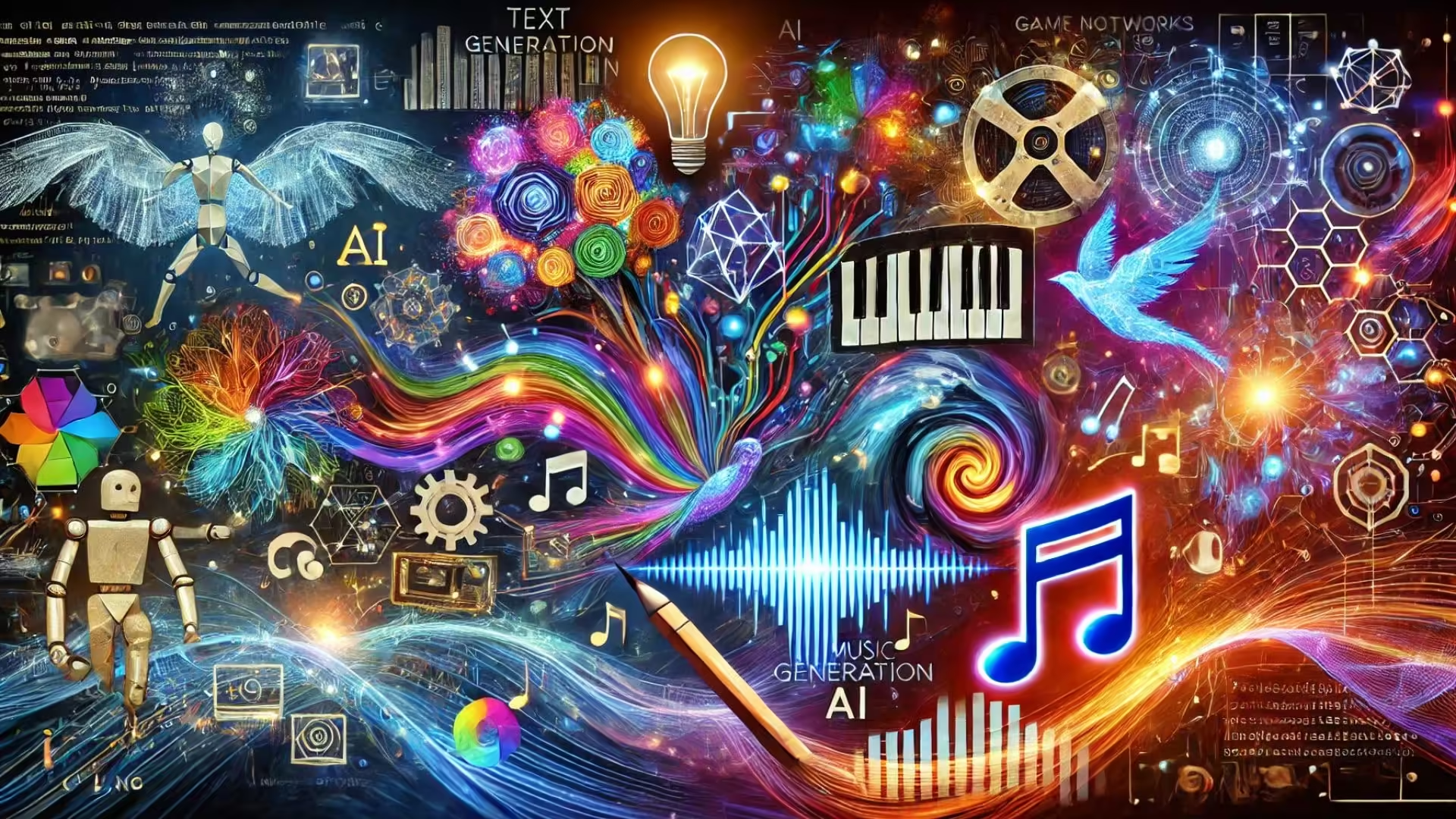
Generative AI is not a one-trick pony; it comes in many forms, each offering unique ways to create. From writing stories to generating music, these tools redefine the boundaries of creativity. Let’s explore some of the most popular kinds.
1. Text Generation
Natural Language Processing (NLP) tools like ChatGPT and Jasper can generate coherent text based on prompts. They’re widely used for content creation, chatbots, educational materials, and even fiction writing. Whether it’s a blog post or a conversation, these tools provide speed and consistency, though they need some fine-tuning from human editors.
2. Image Generation
AI tools like DALL·E, MidJourney, and Stable Diffusion create stunning images from text descriptions. These tools are popular in marketing and design, helping professionals produce visual assets quickly. Some use them for personal projects or experimental art, making creativity more accessible to non-artists.
3. Video Generation
In the realm of video, one standout platform is Invideo AI. Imagine turning a simple idea into a full-fledged video with minimal effort. Invideo AI allows users to input text and generate polished videos, complete with stock media, AI-generated voiceovers, and custom voice cloning options. Whether you’re building content for social media or a corporate campaign, this tool simplifies the entire process, saving time without sacrificing quality.
Invideo AI stands out by being practical, user-friendly, and focused on productivity. You can see for yourself and explore more about Invideo AI.
4. Music Generation
AI-powered music tools like AIVA, Suno, Udio and OpenAI’s MuseNet create original tracks in various genres. They are often used for background scores, sound design, or quick prototypes in creative projects. Though they can’t replace human emotion in music, these tools are great for sparking ideas and filling in gaps during the creative process.
5. Other Generative AI Applications
- Code Generation: Tools like GitHub Copilot and Tabnine assist developers by auto-completing code or generating snippets based on prompts.
- Game Content Generation: AI can create levels, characters, or storylines, as seen in experimental game projects.
- Voice Generation: Synthetic voice tools offer realistic voiceovers and can even clone voices for narration or customer service use.
Generative AI isn’t just one thing—it’s a vibrant ecosystem of tools. Each one unlocks new possibilities, making it easier to create faster, smarter, and often in ways we never imagined before. But as we continue to explore these tools, one important question lingers: Will they help us create more, or will we begin to rely on them too much?
III. Best Practices for Using Generative AI
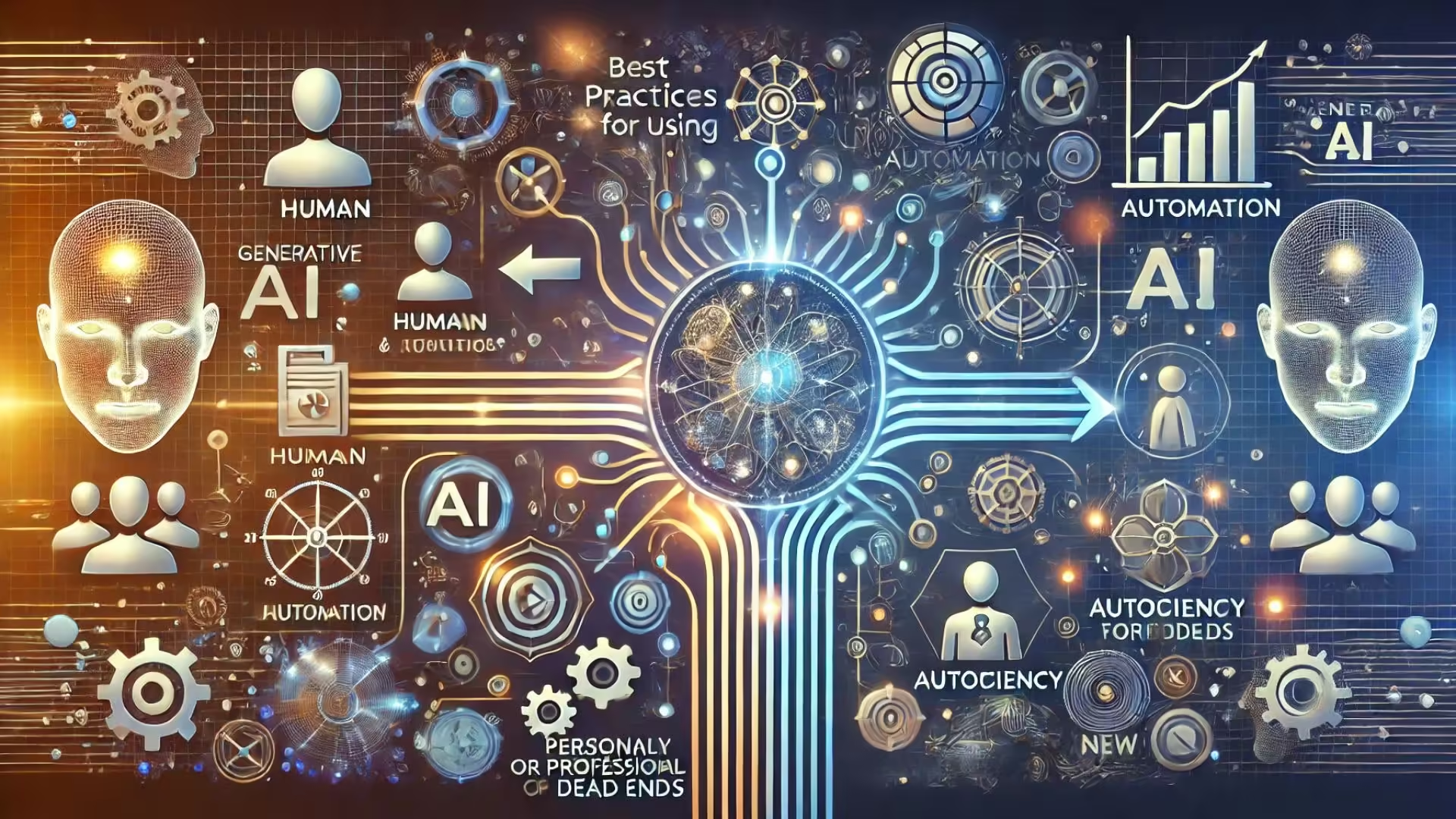
Generative AI opens up exciting opportunities, but using it effectively requires strategy. Here are some best practices to make the most out of it.
1. Choosing the Right Tool for the Right Purpose
Each generative AI tool serves specific needs. Text tools like ChatGPT are great for brainstorming or drafting, while platforms like Invideo AI are ideal for video creation. Align your choice with your personal or professional goals to maximize impact.
2. How to Integrate AI Seamlessly
AI works best when it complements, not replaces, human creativity. For example, you might use an AI tool to generate ideas or automate drafts, and then refine the output with your personal touch. Think of it as a collaborative partner. Combining AI-generated and human-created elements can lead to innovative outcomes—whether it’s text, music, or video.
3. AI for Efficiency and Innovation
Generative AI shines in repetitive tasks. Automating mundane parts of a workflow—like formatting text, creating visual templates, or generating rough video drafts—saves time and energy. This leaves room for you to explore new ideas and push boundaries in your creative space. It also opens doors to forms of expression that might have felt inaccessible before.
4. Limits and Risks
While AI is powerful, over-relying on it can backfire. These systems are not infallible—they can misinterpret prompts or produce outputs that lack context or coherence. Maintaining a human-in-the-loop approach ensures that the final product retains quality and relevance. It’s essential to treat AI as a tool, not a crutch, and keep your own skills sharp alongside it.
Used wisely, generative AI can be a powerful ally in your creative journey. Balancing automation with creativity and understanding its limits will help you make the most out of these technologies while staying true to your vision.
IV. The Creative Paradox: Should We Outsource Creativity to AI?
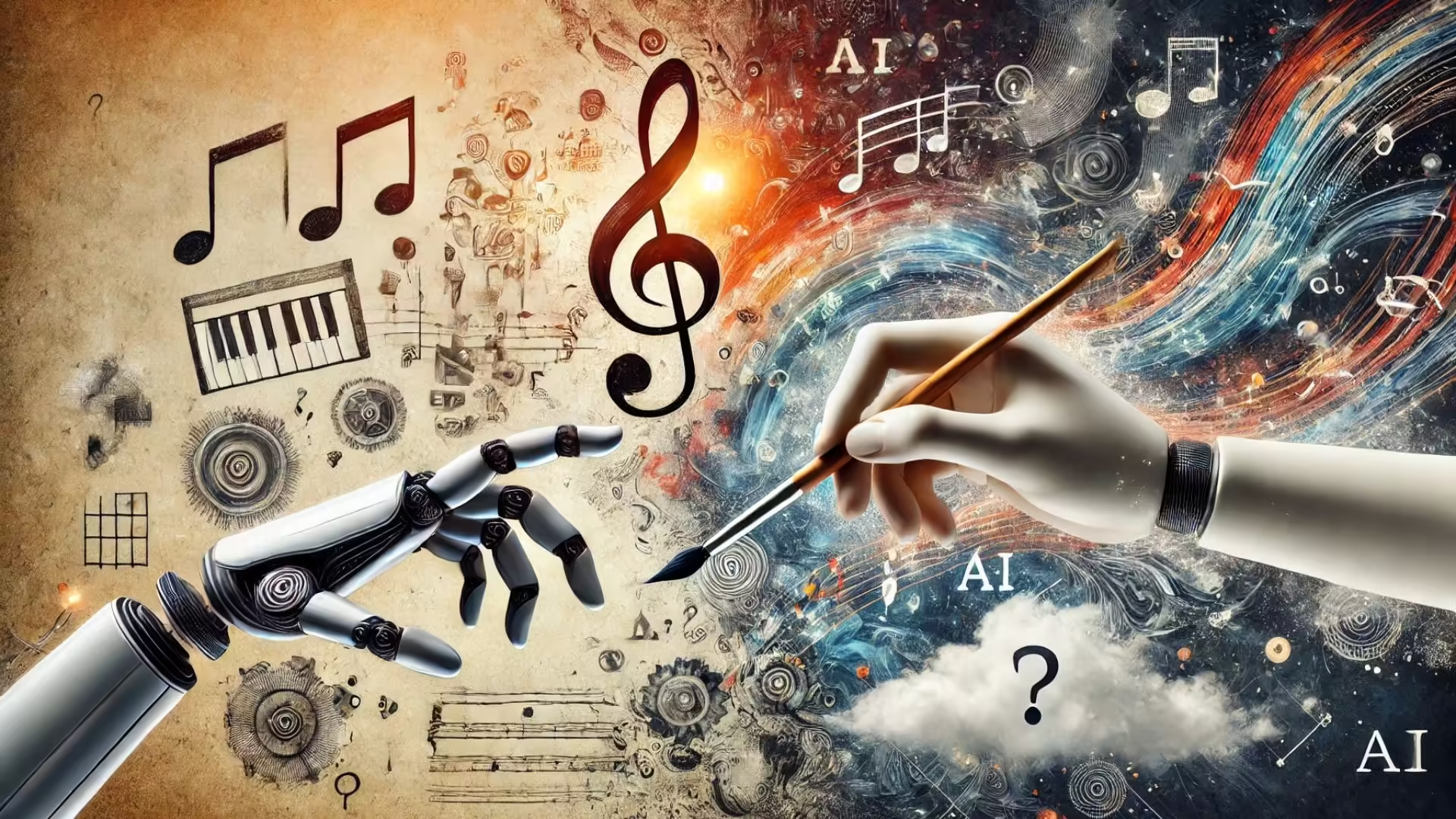
The question of whether we should rely on AI for creative work is complicated. Creativity is often seen as uniquely human—a way to express, explore, and make sense of the world. But what happens when machines take over this space? Let’s dive into the paradox.
1. The Meaning of Creativity in Human Life
Creativity is more than just making things; it’s a reflection of our emotions, experiences, and thoughts. Whether it’s painting, storytelling, or music, the act of creating gives many of us a sense of purpose. It helps us connect with others, discover ourselves, and leave behind a personal mark.
2. AI as a Creative Partner vs. Replacement
AI can be a powerful creative partner—helping with brainstorming, generating ideas, and offering new perspectives. For instance, musicians use AI tools to experiment with melodies, while writers use AI for overcoming writer’s block. However, the danger lies in outsourcing too much. If we begin to rely entirely on AI for creative work, we risk abandoning our own creative efforts, reducing our role to curators rather than creators.
3. The Potential Consequences of AI-Created Art
What would a world look like where AI handles most of the creative output? Without human input, art and creativity might lose their emotional resonance and cultural depth. Unique expressions tied to personal experience could disappear, leading to a world filled with technically perfect but emotionally hollow content.
There’s also a broader concern: if we stop engaging in creative processes, we might lose a key part of what it means to be human. Creativity isn’t just about the final product; it’s about the journey, the mistakes, and the growth along the way.
4. Maintaining the Human Element in Art
While AI can generate impressive works, the emotional depth of human creations is hard to replicate. Art connects with us on a personal level because we know it came from another person’s mind and heart. The quirks, imperfections, and personal narratives imbued in human art give it authenticity and meaning.
Can AI-generated content evoke the same emotions? Perhaps on a surface level, but the deeper, empathetic connection comes from knowing the creator shared a piece of themselves. This emotional connection is what makes art, music, and literature so impactful—and it’s something that AI, no matter how advanced, may never fully achieve.
Creativity is not just about output—it’s about expression, connection, and meaning. While AI can assist and inspire, the true essence of creativity lies in human hands. Balancing the use of AI with our own creative endeavors ensures that we don’t lose touch with what makes our work—and our lives—truly meaningful.
V. Ethical Considerations in the Use of Generative AI
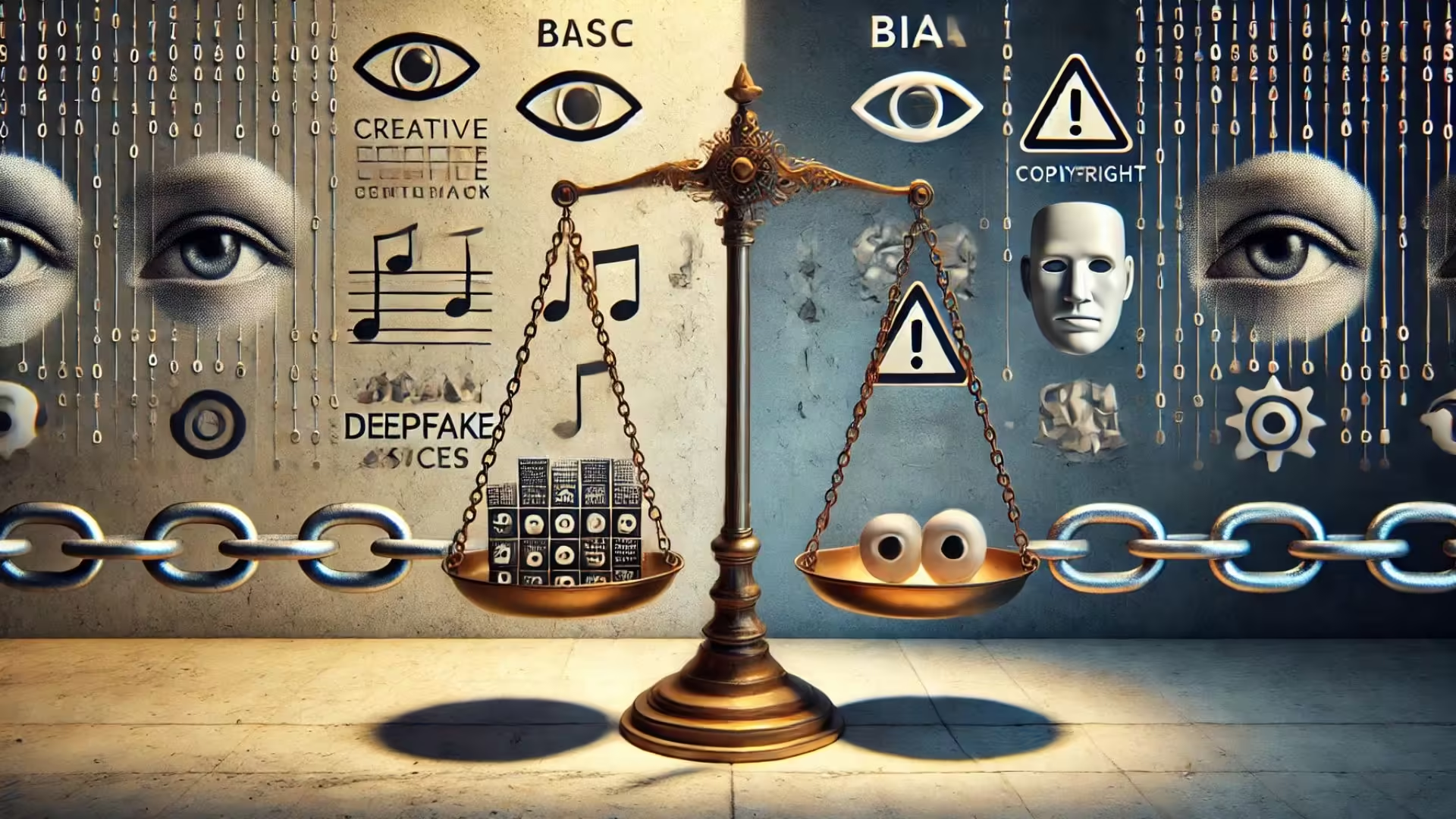
Generative AI offers amazing potential, but it also raises serious ethical questions. As we integrate these tools into our lives and industries, we must think critically about their impact.
1. Ownership and Copyright Issues
A major challenge with AI-generated content is determining ownership. Who owns the output—the person who used the tool, the developers behind the AI, or no one at all? Legal systems are still catching up, and we face complicated questions around intellectual property rights.
2. Bias and Representation in AI Models
AI learns from existing data, which means it can inherit and amplify biases from its training sets. These biases can appear in everything from generated text to visuals, skewing representations of gender, race, or culture. Ensuring that AI models promote diversity and fairness is crucial to avoid reinforcing stereotypes.
3. Misuse and Misinformation
Generative AI has made it easier to create synthetic media like deepfakes, which can be used for malicious purposes, including spreading misinformation. These tools are powerful, and safeguards are needed to prevent unethical uses—whether it’s generating fake news or misleading videos.
4. The Future of Work: Will AI Replace Creators?
The rise of AI tools sparks fears of job losses in creative industries. Writers, artists, and musicians worry that AI might replace human work. However, AI also offers opportunities for empowerment by automating tedious tasks, enabling creators to focus on more meaningful work. Striking a balance will be key—AI should enhance human creativity, not replace it.
5. Transparency and Consent
With AI-generated media on the rise, transparency becomes critical. Users should know when content has been created by AI. Disclosing AI involvement builds trust and ensures people can make informed decisions. Ethical responsibility also means considering the impact of AI-generated media on public trust and accountability.
Navigating the ethics of generative AI requires thoughtful action. While these tools have the power to transform industries, we must handle them responsibly, ensuring they benefit society without compromising fairness, transparency, or creativity.
VI. Shaping the Future with Generative AI
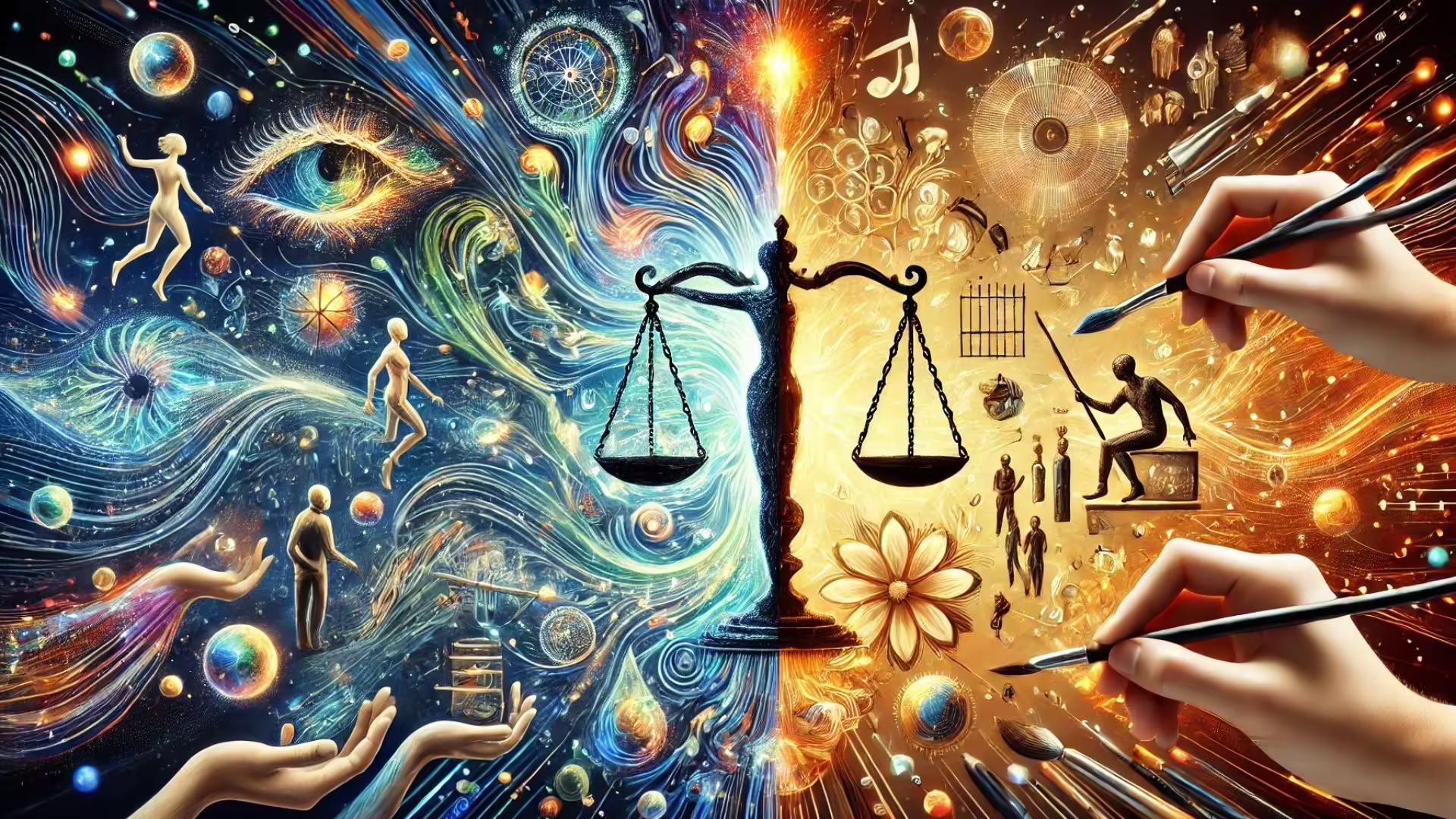
Generative AI presents exciting opportunities, but the key is to use it thoughtfully.
1. Striking a Balance Between Innovation and Human Creativity
AI should enhance creativity, not replace it. It offers tools to experiment and innovate, but the purpose remains ours to define. Finding meaning in the evolving landscape means learning to work with AI without losing what makes human creativity unique.
2. Ongoing Ethical Dialogue
AI evolves quickly, and with it comes the need for continuous reflection. Thoughtful regulation and ethical frameworks will ensure these tools are used responsibly. Staying engaged in this conversation helps us shape AI in ways that align with human values.
3. The Role of Individuals in an AI-Augmented World
Embracing AI requires active participation in the creative process. We shouldn’t let technology take the wheel but instead use it as a tool to amplify our potential. In this partnership, human creativity can remain at the center—AI helps us explore, but it’s up to us to give meaning to what we create.
The future of generative AI is in our hands. If we harness its potential thoughtfully and responsibly, it can become an incredible ally in the creative journey, allowing us to reach new heights while still staying true to our humanity.
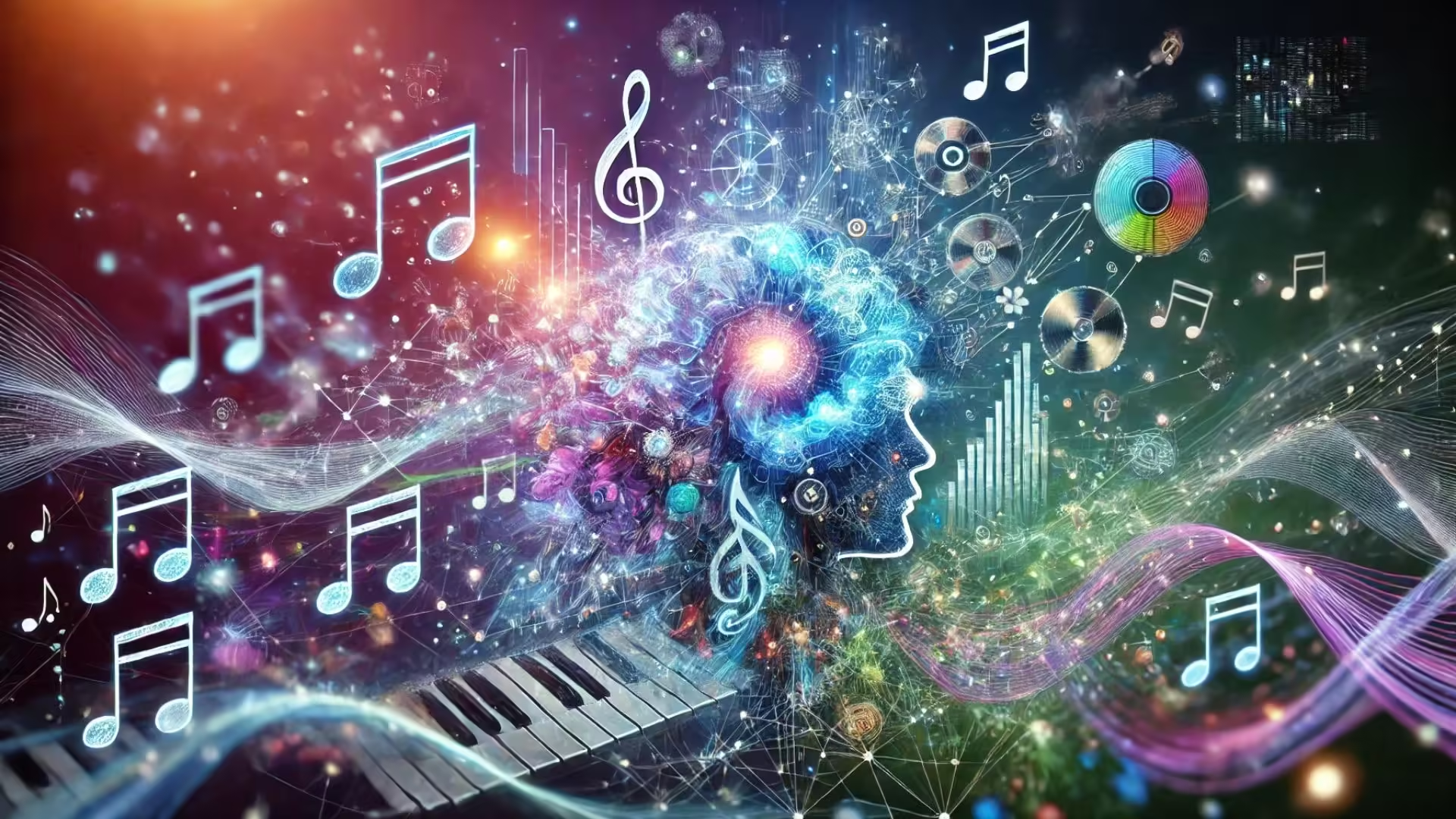

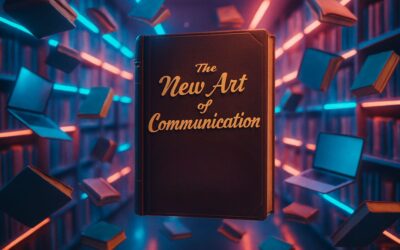
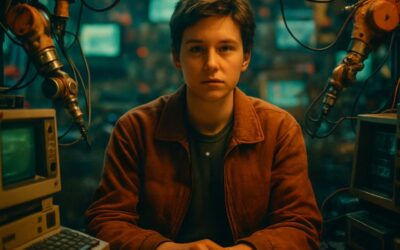






0 Comments